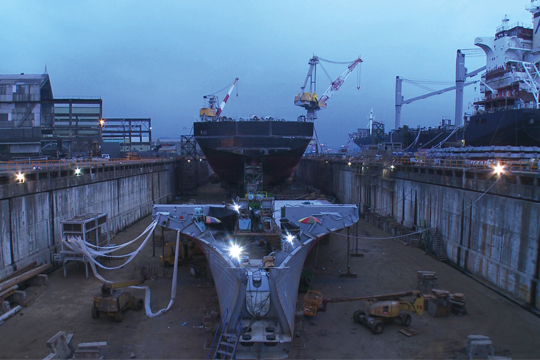TIME, PLACE, MEMORY: A LOOK AT HSU CHIA-WEI’S MULTI-NARRATIVE LANGUAGE
| January 22, 2014 | Post In LEAP 24

Hsu Chia-Wei’s films are often characterized by “low temperature,” or a calm treatment of composition and objects. The viewer quietly listens to their narrations, which unfold with a slow and patient attitude. This kind of contained maturity is unusual for an artist only 30 years of age. Hsu is among a young generation of Taiwanese artists who have been described as inhabiting a political space without political potential— their expressions could only be channeled through the fetishization of objects and the past. According to this point of view, beginning in the late 1990s, the cultural scene in Taiwan moved toward a state of isolated monologue, which in contemporary art has translated into a state of fatigue, leading to “Art of Frustration.” Hsu Chia-Wei considers the above-mentioned view too narrow. The absence of artworks’ engagement with political history does not mean that artists are unable to translate their desires into action. On the contrary, young artists have been effectively transforming the way memory and history is represented today.
WHEN HISTORY CANNOT BE RE-PRESENTED
The Story of Hoping Island (2008) can be seen as Hsu Chia-Wei’s response to the Art of Frustration. The film is shot at a boat factory on Keelung’s Hoping Island. The island formerly served as Japan’s southern base for military shipbuilding. After the war, the ship factory also played a significant role in Taiwan’s economic development. By surviving two political eras, the factory contains multiple histories, depending on the narrator’s national identification. In The Story of Hoping Island, Hsu Chia-Wei employed several different elements—the real ship factory, dialogue with his grandmother, electronic music, and floral patterns—to create a highly complex narrative reading. With this deliberately designed approach, Hsu hopes that the audience can wander through the real (the historical factory site), memory (the dialogue with his grandmother), and an overall dream-like presentation. Narrative films have long explored the meaning of narration, the ways of narrating, and its cultural function. The Story of Hoping Island uses a chaotic, multi-layered way of storytelling to blur the distinction between dream and daily life, a separation that the medium of film innately creates.
Confronted with a history that cannot actually be re-presented, Hsu Chia-Wei creates an alternative narrative method to address the distance between the past and present, thus creating a new reality of his own. He considers this process an action, and furthermore, an action that defeats issues of re-presenting. To re-represent requires a departure from reality. Hsu uses the narrative function of film itself, as well as the off-screen presence of real people, places, and things, to draw out the contours of the fictional narrative of the film and to reveal the structure of the narrative itself. In Hsu’s latest work Marshal Tie Jia (2012-2013), the concept of the off-screen is again considered to create a structure that seems real and illusory at the same time.
In Marshal Tie Jia, a dialogue between man and god initiates the artist’s quest for cultural memory, setting up the relationship between the narrative and production of myth and film. In 2010, Hsu encountered a small island called Turtle Island, not far from Beigan Village in the Matsu Islands. The contour and size of this island gives it a fairy tale-like aura. Hsu immediately chose Turtle Island as the filming location for his writing and research project about island memory. Prior to the shoot, the artist was told that he must gain the permission of the island owner Frog God, locally known as Marshal Tie Jia (“Ironclad Marshal”). The elaborate rituals and quantity of research led the artist to understand the very different historical fates of Matsu and Taiwan, though both now belong to the same authority. Matsu is located across the Taiwan Strait from Fujian. When Chiang Kai-shek and the Kuomintang army moved to Taiwan, Turtle Island became an important strategic point between China and Taiwan. Over time, its military significance faded, the fortifications were abandoned, and Marshal Tie Jia regained authority of Turtle Island. It is said that the Frog King’s Temple did not originate on Turtle Island. It was initially founded on China’s Wuyi Mountain, but moved to the Matsu Islands after its home temple was destroyed during the Cultural Revolution……(Continue reading in LEAP 24)

